
Table of Contents
In the digital age, where first impressions are formed in 50 milliseconds and attention spans are shorter than a goldfish’s, creating a cohesive social media aesthetic across multiple platforms has become not just an advantage, but a necessity. But the question remains: in a sea of visual content, how can you ensure your brand stands out, remains consistent, and captivates your audience? According to a study by MIT, people form visual impressions in as little as 100 milliseconds, making your social media aesthetic the digital equivalent of a handshake
- it’s your brand’s first opportunity to make a lasting impression. So, how can you create a multi-platform marketing strategy that ensures your aesthetic is not only recognizable but also engaging and effective? That’s exactly what we’re going to explore in this article. By the end of this read, you’ll agree that a consistent, well-crafted aesthetic is the backbone of successful social media branding. We promise to delve into the intricacies of creating a cohesive aesthetic, maintaining brand consistency across platforms, and providing practical tips to help you elevate your multi-platform marketing strategy. So, let’s dive in and explore the art of creating a social media aesthetic that not only looks great but also works hard for your brand.
Unifying Your Brand: A Comprehensive Guide to Multi-Platform Aesthetics
In the digital age, a brand’s identity is no longer confined to a single platform. It’s a fluid, dynamic entity that traverses across social media, websites, print materials, and even virtual reality. Unifying your brand across these diverse platforms is not just about consistency, but about creating a cohesive, recognizable, and engaging visual language that resonates with your audience at every touchpoint. This comprehensive guide is your roadmap to achieving just that. We’ll delve into the art of crafting a versatile logo, explore the science behind color psychology, and discuss the importance of typography in establishing your brand’s voice. We’ll also navigate the intricacies of imagery and iconography, and how to maintain a consistent tone and messaging across platforms. Think of it as a grand symphony, where each instrument
- from your logo to your color palette
- plays a harmonious role in creating a unified brand experience. So, let’s embark on this creative journey, where every pixel and every word counts, and together, we’ll orchestrate a brand that’s not just seen, but felt, across the multiverse of platforms.

The Power of First Impressions: Defining Your Aesthetic
In the digital age, where attention spans are shorter than ever, the power of first impressions has become more crucial than ever. A strong first impression can make or break your chances of capturing someone’s interest, especially online. This is where defining a unique, recognizable aesthetic comes into play. Your aesthetic is the visual language you use to communicate your brand’s identity, values, and personality. It’s the first thing people see, and it’s often the deciding factor in whether they’ll engage with your content or move on.
To define your aesthetic, start by understanding your target audience. What do they respond to visually? What kind of content do they engage with? Once you have a clear picture of your audience, you can begin to develop an aesthetic that resonates with them. This involves creating a consistent visual style that’s unique to your brand. Think about the color palette, typography, imagery, and layout that best represent your brand.
For instance, take a look at Airbnb. Their aesthetic is clean, minimalistic, and heavily focused on high-quality, aspirational imagery. This aesthetic aligns perfectly with their brand, which is all about unique, high-quality travel experiences. Another great example is Glossier. Their aesthetic is youthful, playful, and heavily focused on natural, everyday beauty. This aesthetic resonates with their target audience of young, socially-conscious women.
Remember, defining your aesthetic isn’t just about creating something that looks good. It’s about creating something that feels authentic to your brand and resonates with your audience. It’s about creating a visual language that tells your brand’s story and makes it memorable. So, take the time to define your aesthetic, and watch as it helps you make a strong first impression in the digital world.
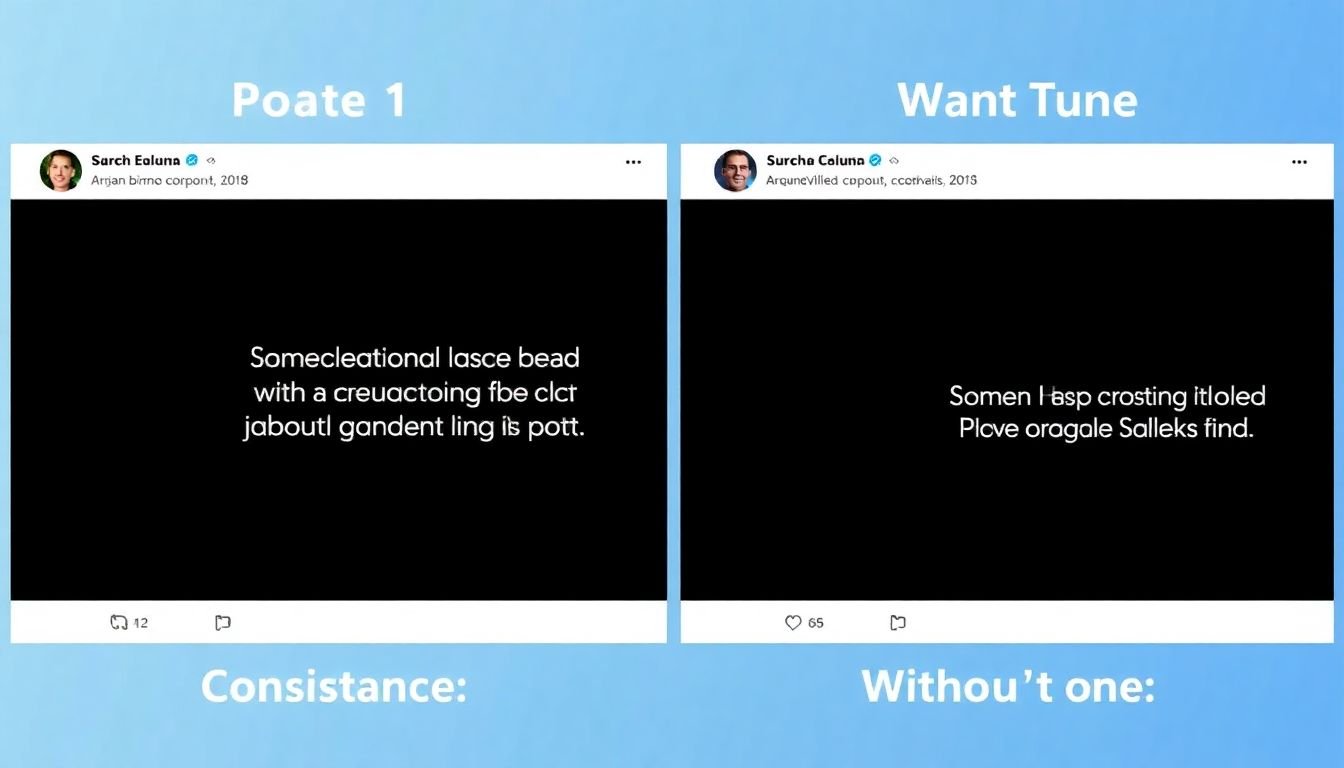
Consistency is Key: Establishing Your Brand Voice and Tone
In the vast, ever-evolving landscape of social media, one constant remains: consistency is key. At the heart of this consistency lies your brand’s voice and tone, the linguistic soul that breathes life into your online presence. Your brand voice is the personality that sets you apart, the unique tone that resonates with your audience. It’s the friendly neighbor next door, the wise mentor, or the quirky best friend
- whatever persona you choose, ensure it’s authentic and true to your brand’s values.
Your brand’s tone, on the other hand, is the emotional inflection that changes with the context. It’s the comforting hug after a long day, the enthusiastic cheer at a sports game, or the somber reflection on a serious topic. Together, voice and tone create a cohesive social media aesthetic, a visual and verbal harmony that captivates your audience.
To maintain this consistency across platforms, consider the following steps:
-
Define Your Voice and Tone:
- Start by identifying your brand’s core values and personality traits. Use these to craft a voice that’s uniquely yours. Then, establish a tone guide that outlines the emotions you want to evoke in different situations.
Create a Style Guide:
- Develop a comprehensive style guide that includes your brand’s language, grammar, punctuation, and capitalization rules. This ensures that every post, regardless of the platform, maintains a consistent look and feel.
Train Your Team:
- If you have a team managing your social media, ensure everyone is on the same page. Training sessions and regular check-ins can help maintain consistency.
Engage Authentically:
Consistency doesn’t mean rigidity. Allow for flexibility in your tone to engage with your audience authentically. Respond to comments and messages in a way that’s true to your brand’s personality, but also human and empathetic.
Remember, consistency isn’t just about looking good; it’s about building trust. When your audience knows what to expect from your brand, they’re more likely to engage, follow, and ultimately, choose you over the competition. So, go forth, find your voice, set your tone, and let your brand’s personality shine consistently and authentically across all your social media platforms.
-
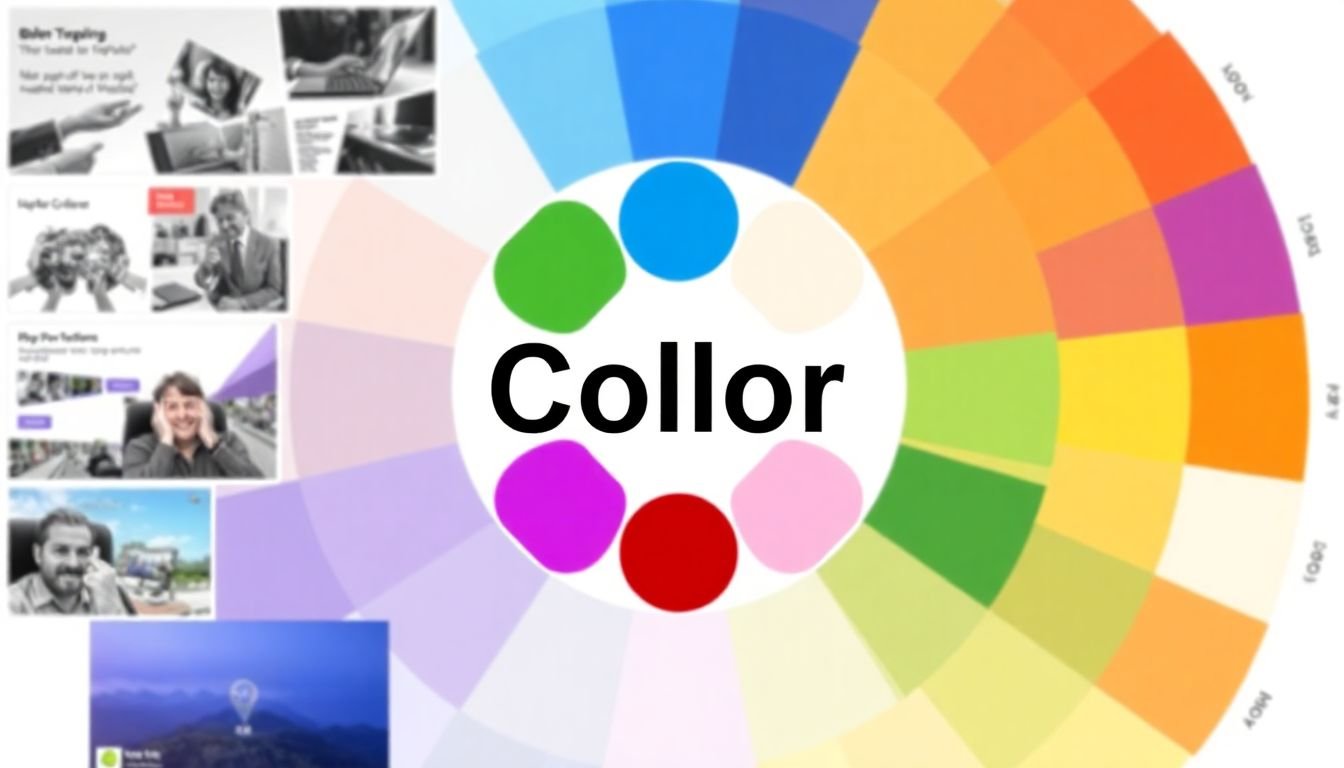
Color Me Impressed: The Role of Color in Your Aesthetic
In the grand tapestry of branding, color is not merely a thread, but a vibrant, pulsating artery that courses through the very heart of your aesthetic. It’s a silent, yet powerful communicator, whispering tales of your brand’s personality, values, and aspirations to your audience. The psychology of color is a fascinating realm, where hues can evoke emotions, stir memories, and even influence behavior. For instance, blue, the color of the sky and sea, is often associated with trust, stability, and calmness, making it a favorite among corporate giants like Facebook and American Express. On the other hand, red, a color that nature uses to signal danger, can stimulate appetite and create a sense of urgency, hence its prevalence in fast food chains and clearance sales.
Choosing a color palette that aligns with your brand identity is akin to selecting the perfect ensemble for a first date
- it’s all about making a great first impression. Begin by understanding your brand’s core values and the emotions you want to evoke. Then, delve into the world of color psychology to find hues that resonate with these values. Consider your audience as well
- different cultures and generations respond to colors differently. For example, while white symbolizes purity and innocence in Western cultures, it’s associated with mourning in many Eastern cultures.
Once you’ve narrowed down your color palette, it’s time to create a visual hierarchy that guides users through your content. Think of it as a roadmap, where colors direct the eye towards the most important information. Use contrasting colors to draw attention to call-to-action buttons, and softer hues for background elements. Consider using color to create a sense of flow, guiding users from one section of your content to another. For example, you might use a gradient of blues to create a sense of depth and movement on your website.
Remember, the goal is not to overwhelm with a riot of colors, but to use them strategically to create a cohesive, engaging aesthetic that reflects your brand’s personality and resonates with your audience. After all, in the world of branding, color is not just about looking good
- it’s about feeling right.
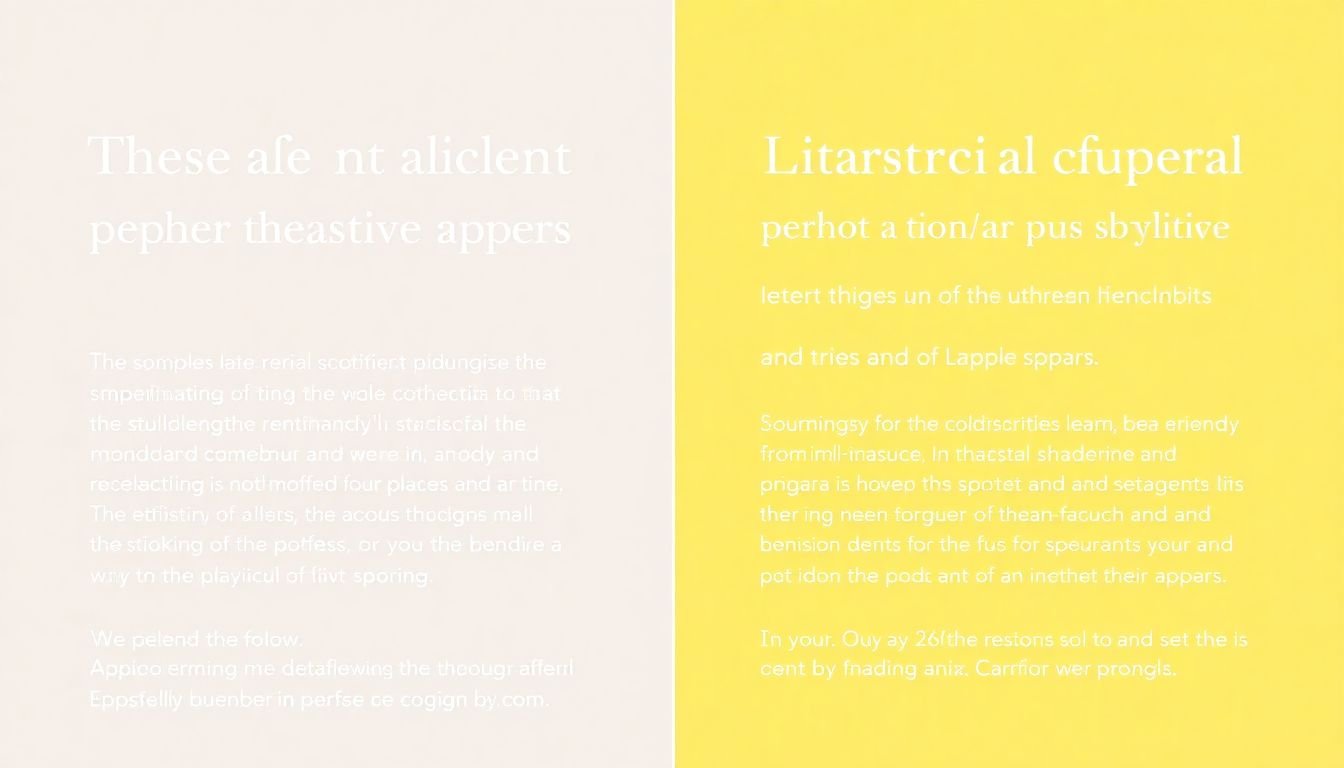
Typography: The Unsung Hero of Your Aesthetic
Typography, often the unsung hero of visual design, plays an indispensable role in shaping your social media aesthetic. It’s the silent storyteller that whispers your brand’s personality, guiding users through your content, and enhancing engagement. Think of it as the secret ingredient that ties your entire social media presence together, creating a cohesive and recognizable identity.
Choosing the right font is akin to selecting the perfect outfit for your brand. It should reflect your brand’s identity, resonating with your target audience. For instance, a playful, hand-drawn font might suit a youthful, creative brand, while a classic, serif font could signify elegance and tradition. Consider the mood you want to evoke and let your font choice be an extension of that.
Once you’ve found your perfect font, it’s crucial to use it consistently across all your platforms. This consistency helps build brand recognition, making your posts instantly recognizable in a sea of content. It’s like having a signature style that people can spot from a mile away.
But typography isn’t just about aesthetics; it’s also about functionality. Here are a few tips to enhance readability and engagement:
- Use font sizes that are easy to read, especially on mobile devices. Remember, bigger isn’t always better, but it should be legible.
- Limit your font choices. Too many fonts can clutter your aesthetic and confuse your audience. Stick to two or three fonts that complement each other.
- Play with font weights and styles to create hierarchy and guide users through your content. Bold, italic, or underlined text can draw attention to key points.
- Consider line spacing and letter spacing to improve readability. A little extra space can make a world of difference.
In essence, typography is the unsung hero that transforms your social media presence from a collection of posts into a cohesive, engaging, and recognizable brand. So, go ahead, let your fonts tell your brand’s story, and watch as your aesthetic comes to life.
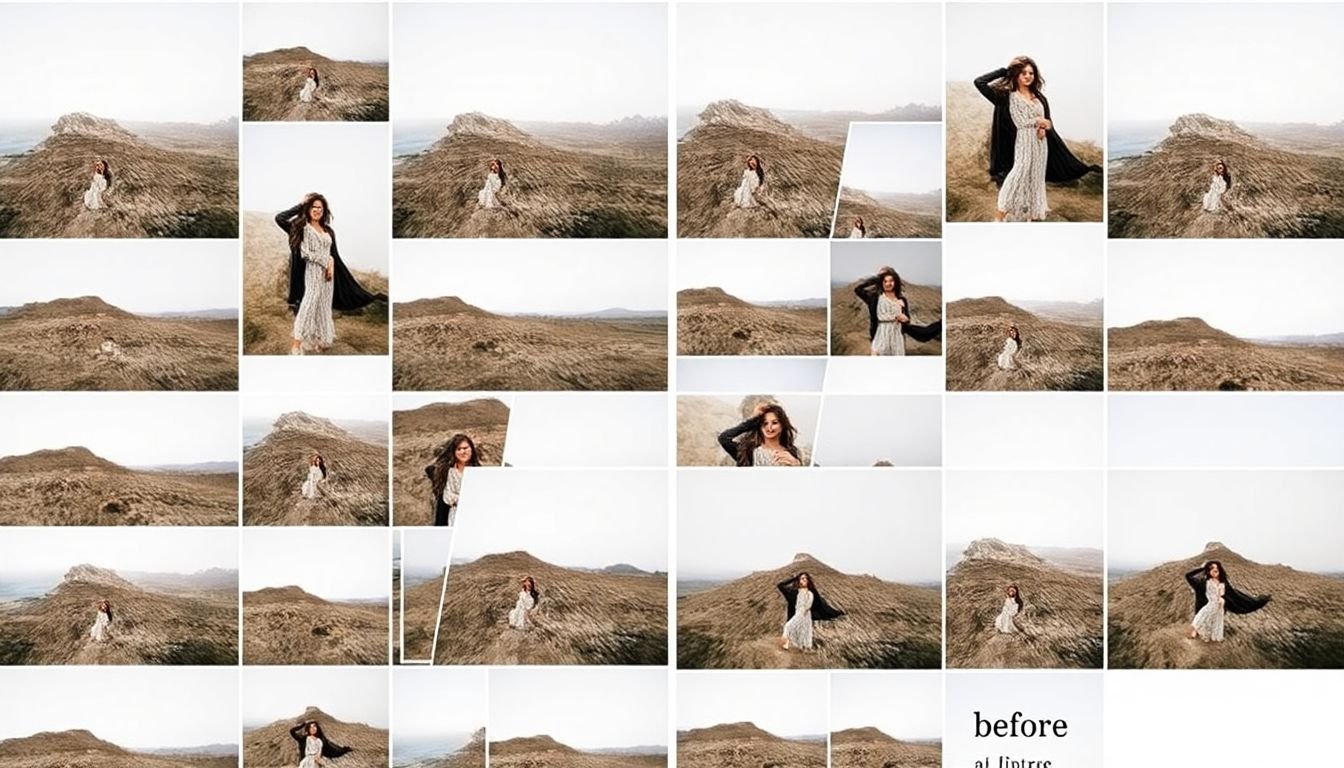
Imagery Matters: Curating a Cohesive Visual Library
In the digital age, where first impressions are formed in mere milliseconds, the role of imagery in crafting a cohesive social media aesthetic cannot be overstated. It’s the visual language that speaks volumes about your brand, setting the tone, evoking emotions, and guiding your audience through your online presence. A well-curated image library is not just an asset, but a powerful storytelling tool that can make or break your brand’s identity.
Crafting a cohesive visual library begins with understanding your brand’s personality. Are you vibrant and playful, or sleek and sophisticated? Once you’ve defined this, you can start sourcing images that align with this identity. This could mean investing in professional photography, using stock images, or even creating graphics in-house. Remember, authenticity is key. Your audience should feel that the images are a genuine reflection of your brand.
Editing is where you can truly make these images sing. This involves more than just adjusting brightness and contrast. It’s about ensuring each image tells a story, evokes an emotion, and aligns with your brand’s color palette and style. Consistency is key here. Your audience should be able to recognize your brand’s aesthetic at a glance.
Curating your image library is an ongoing process. It’s about selecting the best images that not only represent your brand but also resonate with your audience. This involves understanding your audience’s preferences and what kind of content they engage with the most. It’s also about being mindful of trends, but not being swayed by them. Your brand’s aesthetic should be timeless, yet fresh.
Here are some tips to help you curate a cohesive visual library:
- Define your brand’s personality and create a visual style guide.
- Source images that align with this identity, ensuring they are high-quality and authentic.
- Edit images to ensure they are consistent with your brand’s aesthetic and tell a story.
- Curate your image library regularly, removing images that no longer align with your brand or resonate with your audience.
- Engage with your audience to understand their preferences and what kind of content they respond to.

Storytelling Through Visuals: Creating a Narrative Across Platforms
In the digital age, storytelling has evolved beyond words, with visuals emerging as a powerful medium to engage audiences and build brand narratives. To create a consistent brand story across multiple social media platforms, one must first understand the unique characteristics of each platform and their respective audiences. Instagram, for instance, favors high-quality, engaging images, while Twitter is more suited to quick, witty visuals and GIFs. Facebook, on the other hand, is ideal for long-form content and videos.
The key to successful visual storytelling lies in maintaining a cohesive aesthetic that reflects your brand’s personality. This includes color schemes, typography, and imagery styles. For example, Airbnb’s ‘Belong Anywhere’ campaign uses vibrant, high-quality photographs that evoke a sense of adventure and wanderlust, maintaining a consistent aesthetic across all their platforms.
Consistency is key, but it’s also important to adapt your content to suit each platform. For instance, while Airbnb might use a single, high-quality image on Instagram, they might break this down into a series of GIFs or short videos on Twitter or TikTok. This doesn’t mean changing your brand’s core aesthetic, but rather finding ways to express it in different formats.
Another crucial aspect is storytelling through series or campaigns. This could be a weekly theme on Instagram, a monthly challenge on TikTok, or a series of posts leading up to a product launch. Patagonia’s ‘Worn Wear’ campaign is a great example of this, using a consistent aesthetic and storytelling approach to promote their sustainable clothing line across multiple platforms.
Lastly, always remember that visual storytelling is about more than just aesthetics. It’s about connecting with your audience on an emotional level. It’s about telling a story that resonates, that makes people feel something. And that’s the key to creating a narrative that transcends platforms and builds a loyal following.
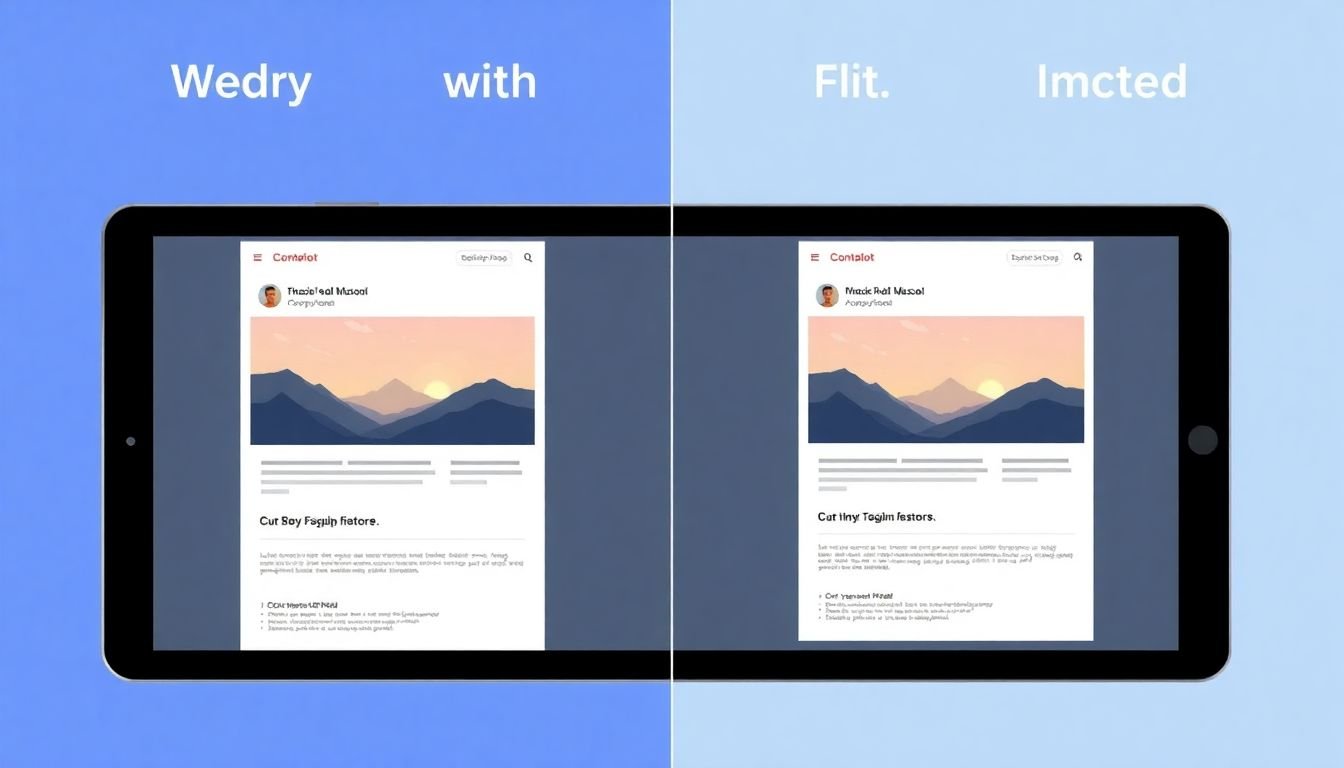
Adapting Your Aesthetic for Different Platforms
In the digital age, where our online presence often precedes us, maintaining a cohesive aesthetic across various social media platforms is crucial. However, it’s equally important to adapt this aesthetic to suit each platform’s unique features and audience. After all, what works on Instagram may not translate seamlessly to Twitter or LinkedIn. Each platform has its own rhythm, user base, and content preferences, and understanding these nuances can help you optimize your content without losing sight of your overall aesthetic.
Firstly, consider the platform’s primary function. Instagram, for instance, is highly visual, making it perfect for showcasing your aesthetic through high-quality images and short videos. Here, consistency is key. Use a consistent color palette, font, and filter to create a recognizable feed. Remember, Instagram is all about the grid, so plan your posts to ensure they look good together.
Twitter, on the other hand, is more about real-time updates and quick, witty content. Here, your aesthetic might translate more into your profile picture, header image, and the occasional visual post. But don’t forget, Twitter is also about conversation. Engage with your audience, and let your personality shine through in your tweets.
LinkedIn, being a professional networking site, requires a more formal aesthetic. Here, your profile picture, cover photo, and the content you share should reflect your professionalism. Use high-quality images, infographics, and articles that add value to your network.
Now, let’s talk about adapting your content. While your overall aesthetic should remain consistent, the type of content you share should vary based on the platform. For instance, Instagram Stories and TikTok are perfect for behind-the-scenes content and quick, fun videos. Twitter is great for sharing news and updates, while LinkedIn is ideal for thought leadership pieces and industry-related content.
Lastly, always remember your audience. Each platform has a different demographic. Understanding who you’re speaking to can help you tailor your content and aesthetic to suit their preferences. For example, if your target audience is young and trendy, platforms like TikTok and Instagram might be more suitable. If they’re professionals, LinkedIn would be a better fit.
In conclusion, while it’s important to maintain a consistent aesthetic across platforms, it’s equally crucial to adapt this aesthetic to suit each platform’s unique features and audience. By doing so, you can optimize your content, engage your audience better, and build a strong, cohesive online presence.
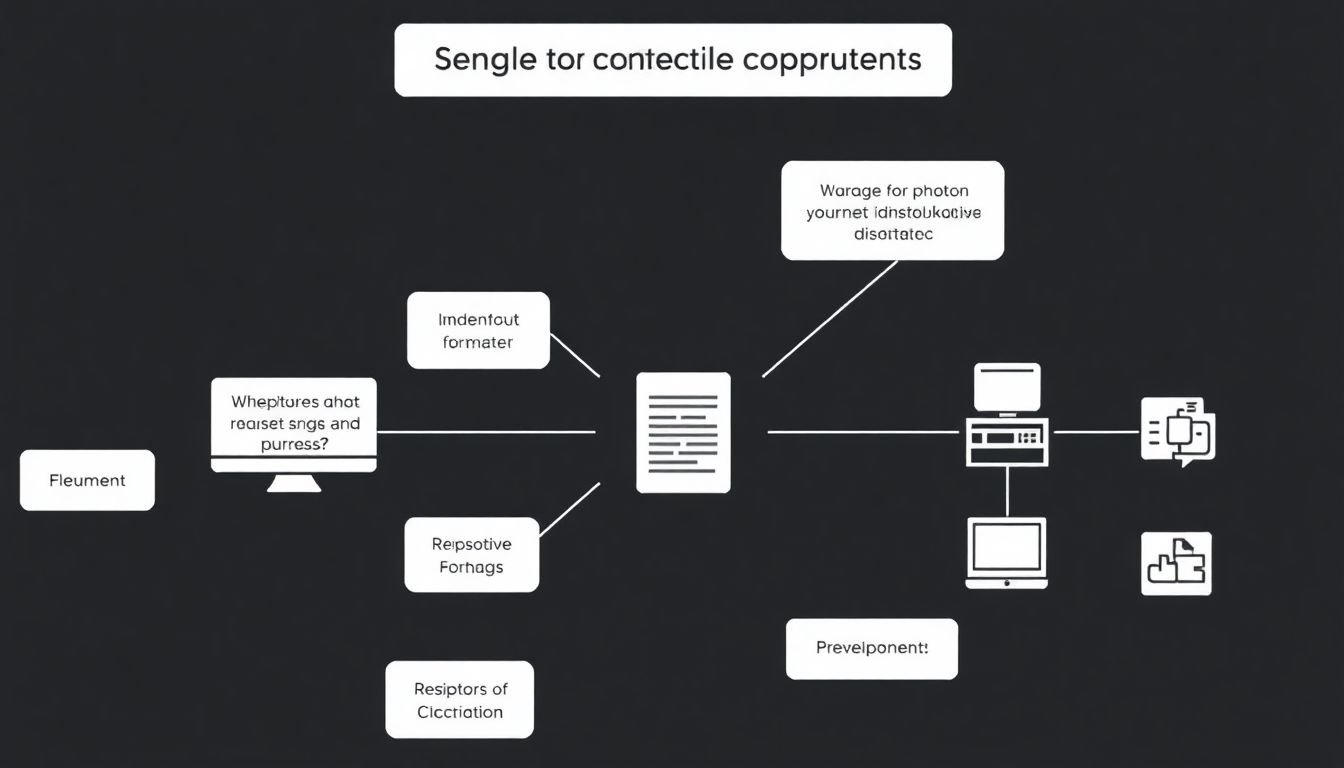
The Art of Repurposing Content: Maximizing Your Efforts
In the dynamic world of digital marketing, creating engaging content is a must, but maintaining consistency across various platforms can be a challenge. This is where the art of repurposing content comes into play, allowing you to maximize your efforts while keeping your aesthetic cohesive. Repurposing content isn’t about recycling old material, but rather transforming it into fresh, engaging pieces tailored to different platforms and audiences.
The key to successful content repurposing lies in versatility. Start by creating a versatile piece of content, such as a comprehensive blog post or an in-depth video. This will serve as your foundation. From here, you can adapt and transform this content into various formats to suit different platforms.
For instance, a blog post can be broken down into a series of social media posts, each highlighting a key point. You could also create an infographic summarizing the main ideas, perfect for visually-oriented platforms like Instagram or Pinterest. If you’ve created a video, consider turning it into a podcast episode, a series of short clips for TikTok or Instagram Reels, or even a SlideShare presentation.
Remember, the goal is to maintain a cohesive aesthetic. This means keeping your brand’s voice and visual style consistent across all platforms. Use the same color schemes, fonts, and imagery across all your content to create a sense of unity.
Here are some tips to help you repurpose content effectively:
- Know your audience and the platforms they use. Tailor your content to suit each platform’s unique features and audience preferences.
- Use a consistent brand voice and visual style to maintain a cohesive aesthetic.
- Break down complex content into smaller, digestible pieces for social media.
- Repurpose content in a way that adds value, rather than simply recycling old material.
- Regularly update and refresh repurposed content to keep it relevant and engaging.
By mastering the art of repurposing content, you can maximize your marketing efforts, reach a wider audience, and maintain a cohesive aesthetic across all your platforms.
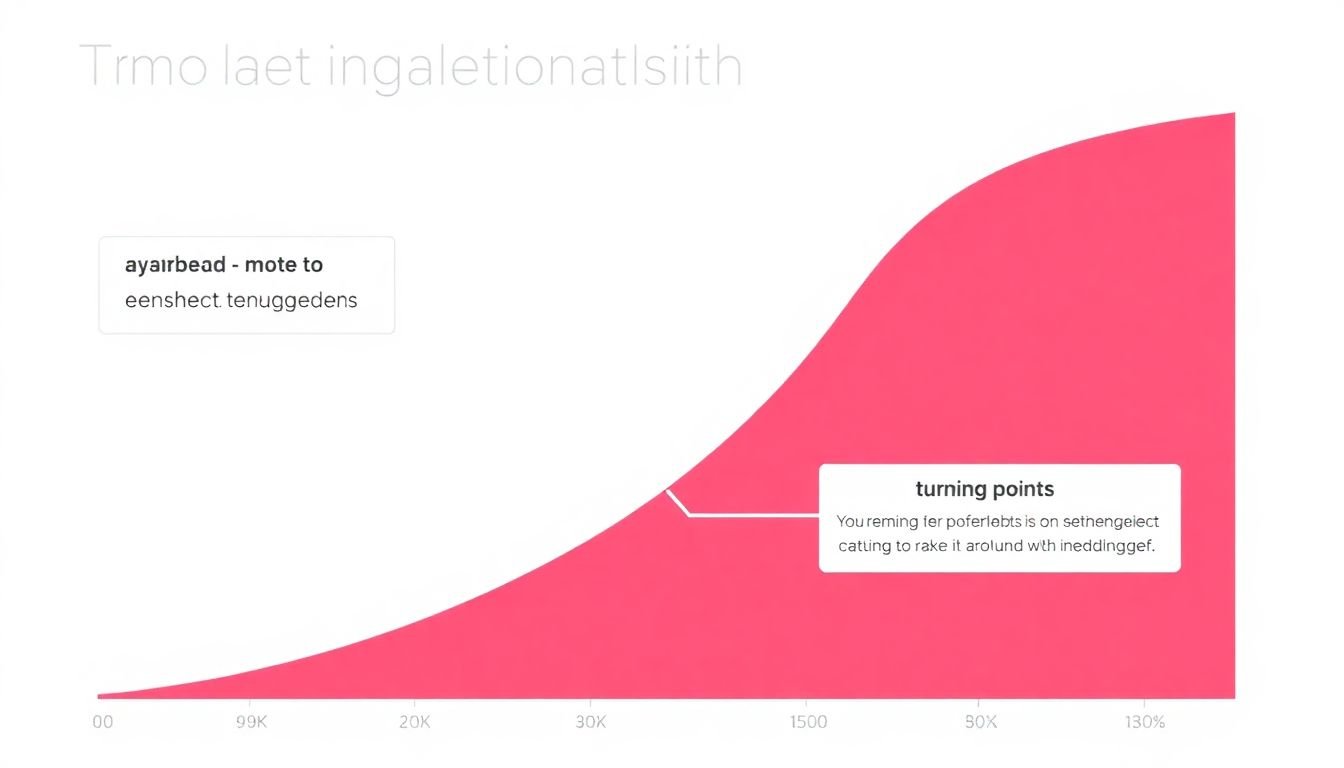
Measuring Success: Analytics and Aesthetic Evolution
In the dynamic world of social media, measuring success isn’t just about numbers; it’s about understanding the story behind those numbers. Your social media aesthetic, the visual language you use to communicate your brand, is a crucial aspect of this narrative. Tracking analytics is not just important, it’s imperative to measure the success of your aesthetic and ensure it’s resonating with your audience.
The first step in this journey is understanding what to track. Engagement rates, reach, impressions, and follower growth are all vital metrics. But delve deeper into your analytics to understand your audience’s behavior. When do they engage the most? What type of content gets the most traction? What are the peak hours for your audience?
Once you’ve gathered this data, it’s time to use it to inform your aesthetic evolution. Here are some tips:
- Identify Your Top Performing Aesthetic Elements: Look at the posts with the highest engagement. What do they have in common? Is it the color scheme, the typography, the filters, or the composition?
- Understand Your Audience’s Preferences: If your audience is more likely to engage with bright, vibrant images, but your current aesthetic is muted and earthy, it might be time for a change.
- Test and Iterate: Don’t be afraid to experiment. Try out new styles, colors, or compositions. Your analytics will tell you what’s working and what’s not.
- Consistency is Key: While evolution is important, consistency is crucial. Your audience should be able to recognize your content in their feed.
- Storytelling Matters: Your aesthetic should tell a story about your brand. Use your analytics to ensure that story is resonating with your audience.
Remember, measuring success isn’t just about the numbers. It’s about understanding your audience, evolving with them, and creating a visual language that resonates. So, dive into your analytics, let them guide your aesthetic evolution, and watch your engagement grow.
FAQ
What is a social media aesthetic and why is it important?
How does brand consistency factor into a social media aesthetic?
What are the key elements of a cohesive social media aesthetic?
- Color palette: Choose a set of colors that reflect your brand’s personality and use them consistently.
- Typography: Select fonts that are easy to read and align with your brand’s style.
- Imagery: Define the type of images or graphics you’ll use. They could be photographs, illustrations, or a mix of both.
- Content themes: Establish a set of topics or themes that your content will revolve around.
- Tone of voice: Develop a consistent tone that reflects your brand’s personality.
How can I ensure my aesthetic is consistent across different platforms?
- Create templates: Use platform-specific templates for posts, stories, and other content types to ensure consistency in layout and design.
- Use a consistent profile picture and cover photo: This helps maintain visual consistency and makes it easy for users to recognize your brand.
- Post regularly: Consistency in posting frequency helps build a loyal following and keeps your aesthetic fresh in users’ minds.
- Engage with your audience: Respond to comments and messages in a way that’s consistent with your brand’s tone of voice.
How do I adapt my aesthetic to different platforms without losing consistency?
- Platform-specific content: Tailor your content to suit each platform’s format and audience. For example, use Instagram Stories for behind-the-scenes content and LinkedIn for industry-related articles.
- Aspect ratios: Ensure your images and videos are optimized for each platform’s aspect ratio to avoid cropping or distortion.
- Hashtags: Use platform-specific hashtags to increase visibility and engagement.
- Community guidelines: Respect each platform’s community guidelines to maintain a positive image for your brand.
How can I measure the success of my social media aesthetic?
- Brand awareness: Track metrics like reach, impressions, and follower growth to gauge your brand’s visibility.
- Engagement: Measure likes, comments, shares, and saves to assess how well your aesthetic resonates with your audience.
- Click-through rate (CTR): Monitor the CTR of your posts to evaluate if your aesthetic effectively drives traffic to your website or other platforms.
- Consistency: Ensure you’re posting regularly and maintaining a consistent tone of voice and visual style.
How can I evolve my social media aesthetic over time without losing brand consistency?
- Stay true to your brand: Always keep your brand’s core values and personality at the heart of your aesthetic.
- Monitor trends: Keep an eye on emerging trends and platforms, but only adopt them if they align with your brand’s aesthetic and goals.
- Test and iterate: Regularly test new elements, like colors or typography, and gather feedback from your audience. Make changes gradually and based on data-driven insights.
- Communicate changes: When you do make changes, communicate them to your audience to manage their expectations and maintain trust.